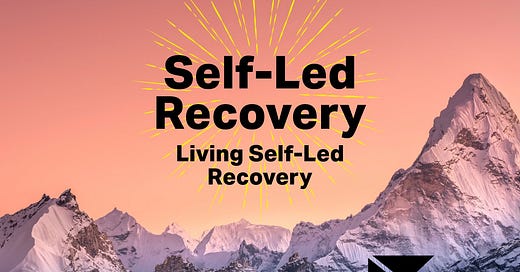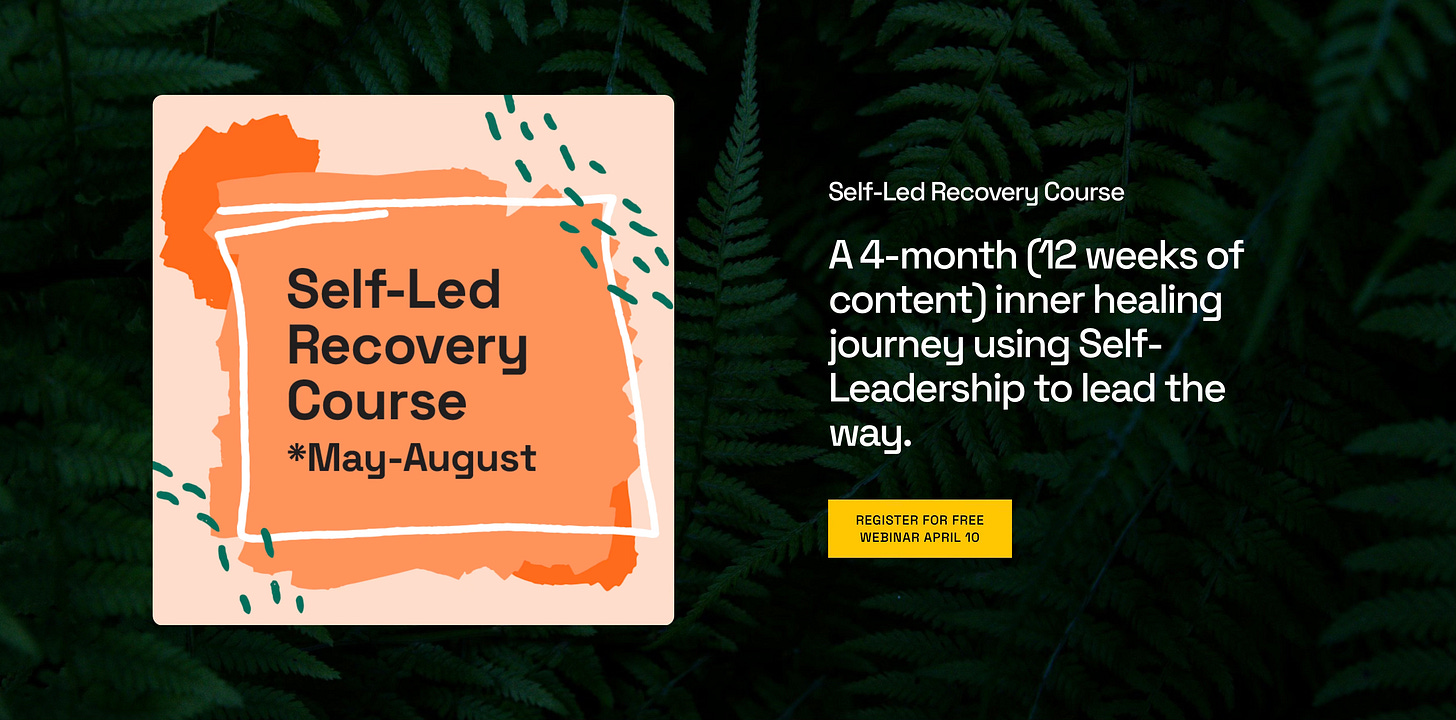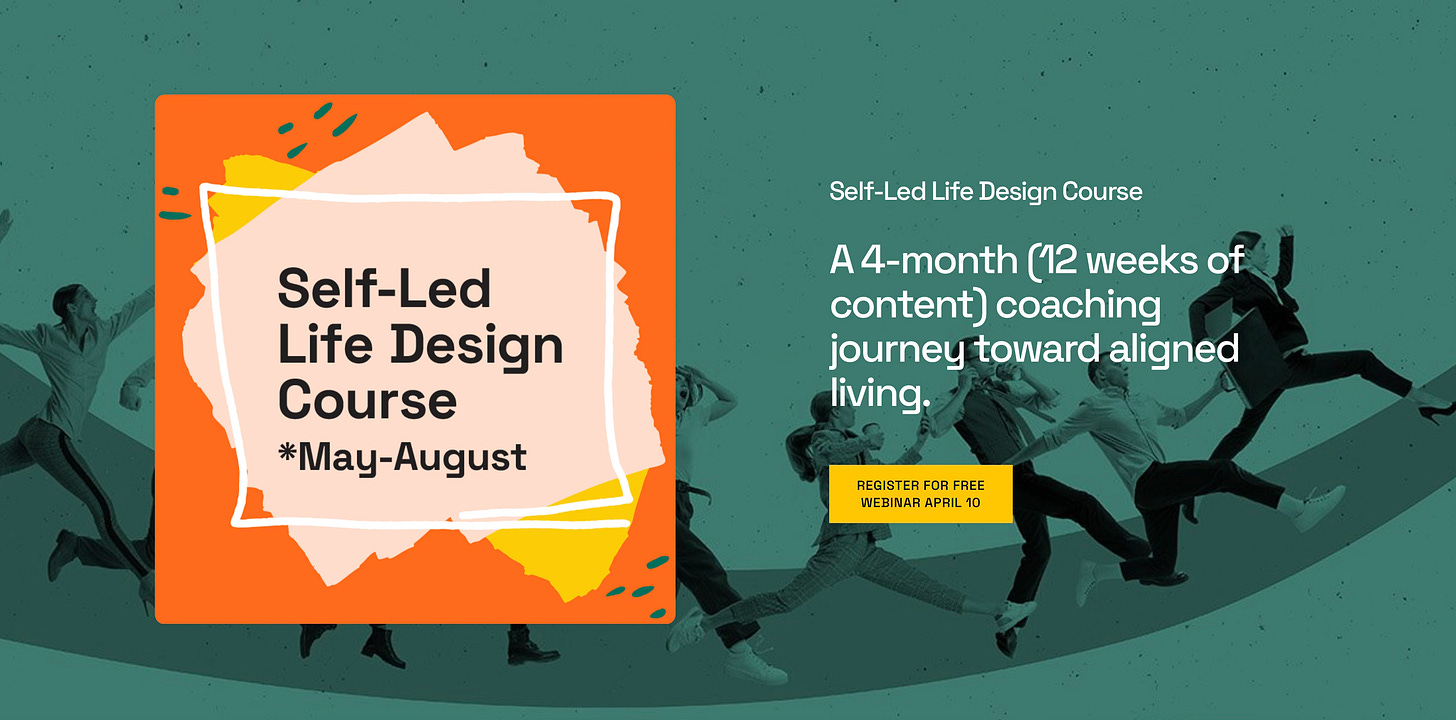There’s a quiet shift that happens when we begin to live from Self—not just in crisis, but in the ordinary rhythms of our days.
It’s subtle. It doesn’t always announce itself. But you notice it in the way your voice softens toward an inner critic. In the way your breath returns after a trigger. In the way you pause before reacting. In how you begin to see your system not as a problem, but as a collection of parts longing for connection, care, and clarity.
This is what it means to live Self-led.
Not perfectly. Not without pain. But with presence. With choice. With more space for healing to keep unfolding—one moment at a time.
As we close out the Self-Led Recovery series, this final post invites you to reflect on what you’ve learned, connect with support, and envision what comes next.
Part I: Presence as a Daily Practice
For many of us, recovery began as a response to suffering. We were searching for relief. For answers. For peace.
But now, Self-led recovery invites a new question:
What does life look like when I’m not reacting—but relating?
When Self leads, we begin to notice:
Our protectors respond with a little more space.
Our exiles are met with more gentleness.
We are less rigid, more fluid. Less frantic, more free.
This isn’t a constant state. It’s not a goal to achieve. It’s a practice.
“Self is not a state you arrive at. It’s a presence you return to.”
— Richard Schwartz, No Bad Parts
And like any practice, it’s strengthened by intention—not perfection.
You may begin your day with a simple check-in:
Who’s present in my system today? What do they need from me?
Or close your day by asking:
Where did I show up from Self? Where could I return tomorrow with more compassion?
These questions anchor us—not in performance, but in presence.
Part II: Creating a Self-Led Support Network
Healing happens in relationship. Yes, we do inner work alone—but we also need mirroring, encouragement, and community.
In IFS, just like in recovery communities, we need trusted others who:
Respect our pace.
Witness our process without fixing.
Speak from their own experience.
Remind us of our own Self when we forget.
Your Self-led support network might include:
A therapist or coach trained in IFS.
A recovery sponsor who honors your inner work.
A peer group that holds space with compassion.
A friend who sees the “you beneath your parts.”
“Connection is the safety cue our nervous system needs to heal.”
— Deb Dana, Anchored
If you’ve done this series mostly on your own, consider what the next level of connection might be for you. Is there someone you could share your story with? Is there a group you’ve been curious to join? Is there a way to co-create safety with others walking a similar path?
Self-led recovery is not a solo journey. And your parts don’t need to heal in isolation.
Part III: Looking Ahead — Visioning Your Self-Led Future
Recovery is not an endpoint—it’s a way of living.
It’s asking:
What am I building now that I’ve stopped abandoning myself?
It’s dreaming again. Creating. Trusting. Beginning to explore who you are beyond your burdens.
“Recovery is a journey of reclaiming the healthy self that gets buried under the wounds of abandonment, abuse, and neglect.”
— Pete Walker, Complex PTSD
This is a perfect moment to pause and set intentions for the season ahead.
You might try this PAUSE Practice to envision your Self-led path forward:
PAUSE Practice for visioning your Self-Led future
P — Presence:
Find stillness. Feel your breath. Let your system know you're here.
A — Awareness:
Notice the parts in your system that feel hopeful, uncertain, or protective about the future.
U — U-Turn:
Turn inward. Ask each part, What would you love to see for us in the next chapter?
S — Self-Compassion:
Affirm: Whatever comes up is welcome. We’ll move forward at our own pace.
E — Engage:
Gently imagine your next season of recovery. What do you want more of? Less of? Who are you becoming?
Reflection Prompt
What has shifted in your system since beginning this series?
Who in your inner world feels more seen, more supported, or more hopeful?
What intention will you carry into your next chapter of Self-led living?
Thank You
Thank you for walking this 13-week journey of Self-Led Recovery.
Your willingness to turn toward your system with compassion, curiosity, and courage has mattered—whether this is your first step or your fiftieth.
As you continue your path, may you return to Self again and again.
Not to fix—but to lead, to love, and to live fully from within.
Further Reading:
No Bad Parts by Richard Schwartz
Anchored by Deb Dana
Complex PTSD by Pete Walker
What are you taking with you from this series? I’d love to hear one insight, shift, or practice that’s been meaningful. Leave a comment below.
Two Free Webinars This Thursday!
Thursday, April 10th, 2025
I’m hosting two free webinars this week to introduce our first in-person courses running from May through August:
Self-Led Recovery
Self-Led Life Design
These gatherings are designed to help you learn more about each program, ask questions, and get a feel for the kind of inner work we’ll be doing together. Whether you're brand new or returning, you're welcome to join.
Webinar 1: Self-Led Recovery (May–August Cohort)
Time: 11:00am ET | 1 hour
Learn more about this course at self-ledrecovery.com. This session is for those curious about how the Internal Family Systems (IFS) model can support recovery—whether from addiction, codependency, burnout, or complex trauma.
You’ll learn:
What Self-led recovery actually means
How we work with protectors and exiles gently
The four-phase structure of the 12-week journey
Who the course is for—and who it’s not for
Bring your questions and parts—I'll be sharing more about how the May cohort will unfold.
Webinar 2: Self-Led Life Design (May–August Cohort)
Time: 4:00pm ET | 1 hour
Learn more about this course at self-ledlifedesign.com. This session introduces a new offering for those ready to live with more clarity and intention.
Inspired by the Pisgah Coaching Institute methodology, this course is about designing a life from within, using four key pillars:
The Visioning Process
Gift Development
The Roadmap
Mapping Internal Influences
We’ll talk about how this course can support people in transition, reinvention, or those craving inner/outer alignment. I’ll walk through the structure and how IFS shows up in the process.
Thank You
To everyone who’s journeyed through Self-Led Recovery with me this season.
Thank you for your presence, your honesty, and your willingness to explore inner healing in community.
And to those feeling curious about what’s next—I hope I’ll see you Thursday.
With care,
Brandon






